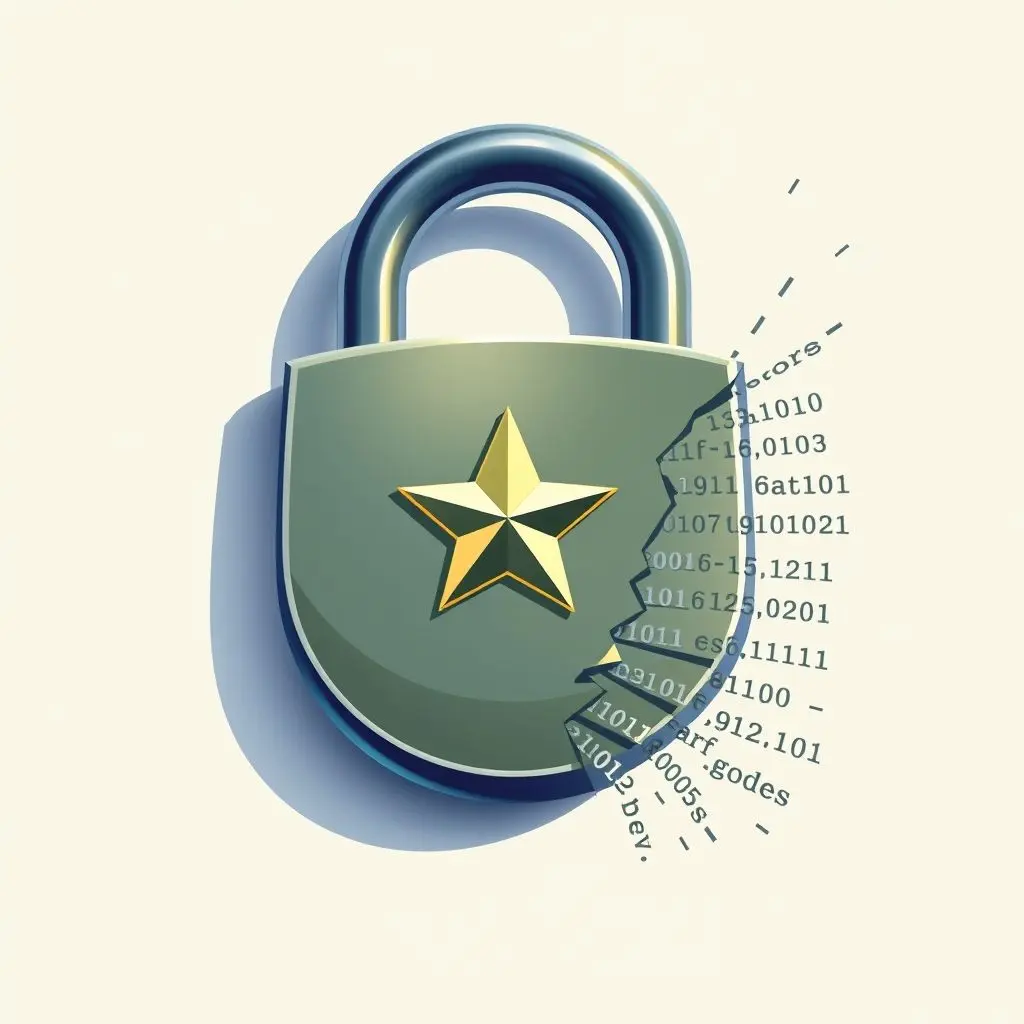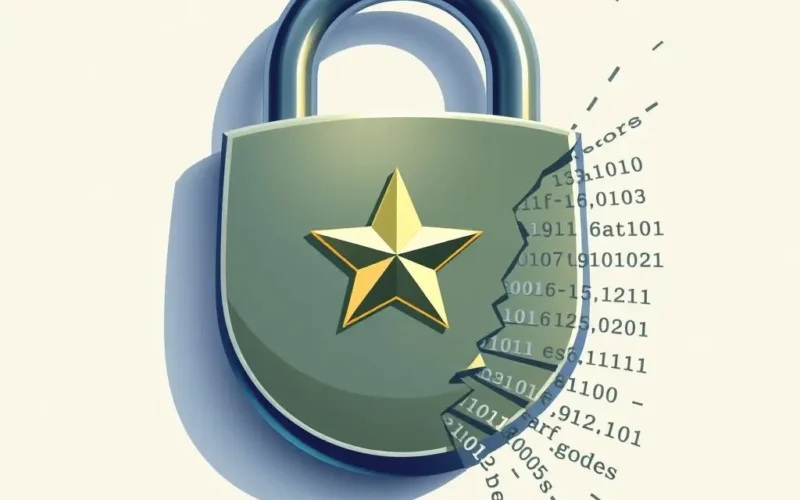You’ve seen it. The headline on a software download page, the bullet point on a VPN feature list, the promise on a secure messaging app: “Military-Grade Encryption.” It sounds serious, impenetrable, like something guarded by laser beams and highly trained operatives. It conjures images of top-secret communications safe from prying eyes.
But let’s pull back the curtain on this impressive-sounding claim. Is “military-grade” truly a benchmark for unbreakable security, or is it a clever piece of marketing designed to instill a sense of unassailable protection?
Table of Contents
The Allure of “Military-Grade”
The term is designed to impress. The military operates in environments where security is paramount, where compromised data could mean catastrophic consequences. Therefore, associating a product’s encryption with military standards *feels* like a guarantee of the highest possible security.
However, here’s a piece of critical intel you need to decode: “military-grade encryption” is not a recognized, defined technical standard or certification. There is no global body or specific technical specification that a product must meet to earn the label “military-grade.”

Think of it this way: Calling a car “racecar-grade” doesn’t automatically mean it adheres to NASCAR or Formula 1 regulations, passes their safety inspections, or is even allowed on their tracks. It simply implies a certain level of performance or capability, often without specific, verifiable criteria.
So, What *Do* Secure Organizations (Like the Military) Use?
Secure organizations, including defense departments, don’t rely on vague labels. They rely on specific, well-tested, and often standardized encryption algorithms and protocols. They also rely heavily on stringent policies and procedures for *how* that encryption is implemented and managed.
The algorithms commonly used in high-security environments are the very same ones available for commercial and public use. We’re talking about algorithms like:
- AES (Advanced Encryption Standard): A symmetric block cipher widely adopted globally. When companies boast “military-grade,” they are almost certainly referring to AES, particularly AES with a 256-bit key (AES-256).
- RSA: A widely used asymmetric encryption algorithm.
- SHA-256/SHA-512: Hashing algorithms used for integrity checking and digital signatures.
These algorithms are considered strong not because a marketing department labeled them “military-grade,” but because they have withstood years (or decades) of cryptanalytic scrutiny by experts worldwide. Their strength comes from complex mathematical structures and computational difficulty in breaking them without the correct key.
Furthermore, secure systems use specific protocols like TLS (Transport Layer Security) for securing internet communications (that little padlock in your browser URL bar) or SSH (Secure Shell) for secure remote access. These protocols utilize the strong algorithms mentioned above within a structured framework that handles key exchange, data integrity, and authentication.

Many government and military systems in the United States, for instance, are required to use cryptographic modules that are validated against the FIPS (Federal Information Processing Standards) 140 series (currently FIPS 140-3). FIPS validation is a *specific, rigorous testing process* conducted by accredited labs to ensure that a cryptographic module meets certain security requirements. This is a concrete standard, unlike the nebulous “military-grade” term.
Strength Lies in Specifics and Implementation
Just saying you use AES-256, while indicating a strong algorithm, isn’t the whole story. True security is a complex ecosystem. The strength of your encryption hinges on several factors:
1. The Algorithm Itself
As mentioned, modern algorithms like AES-256 are considered computationally unbreakable with current technology when used with sufficiently long keys. The math holds up.
2. The Key Length
A longer key generally means exponentially more possible keys, making brute-force attacks (trying every possible key) practically impossible. 256-bit keys for algorithms like AES are considered very strong.
3. The Implementation
This is arguably the most critical, and often the weakest, link. A perfectly strong algorithm can be rendered useless by poor implementation. This includes:
- Weak Key Management: How are keys generated, stored, and exchanged? If keys are easily discoverable, hardcoded, or transmitted insecurely, the encryption is worthless.
- Protocol Misconfiguration: Using an old, vulnerable version of TLS, or improperly configuring a VPN protocol can create loopholes.
- Side-Channel Attacks: Sophisticated attacks that exploit physical characteristics of the system (like timing, power consumption, or electromagnetic leaks) to deduce the key or data, even if the encryption itself isn’t broken.
- Software Vulnerabilities: Bugs in the software that uses the encryption can expose data before it’s encrypted or after it’s decrypted.
- Random Number Generation: Cryptographic keys and other critical values rely on truly random numbers. Predictable or weak random number generators can severely compromise security.

A product claiming “military-grade” using AES-256 but having flaws in how it generates or manages keys, or bugs in its code, is significantly less secure than a product using the same AES-256 algorithm with robust, audited, and correctly implemented key management and software practices.
Why Do Companies Use This Label?
Simple: it sells. It’s a powerful marketing phrase that leverages the public’s perception of military security without requiring the company to adhere to any specific, verifiable military standard (which would likely involve costly and complex certification processes).
- It sounds authoritative and strong.
- It appeals to a sense of ultimate protection.
- Most consumers don’t understand the technical nuances of encryption algorithms, key lengths, and implementation details, making the catchy phrase an easy shorthand.
Think of it as a black box labeled “Super Secure.” You trust the label without being able to inspect what’s inside. But in the world of digital security, inspecting (or at least understanding) what’s inside is crucial.

Want a quick visual summary of this myth? Check out our short video:
What Should You Look For Instead?
When evaluating the security claims of a product or service, look past the “military-grade” fluff and ask specific questions:
- What specific encryption algorithm(s) are being used? (e.g., AES-256, RSA 4096-bit).
- What protocols are being used? (e.g., TLS 1.3, OpenVPN, WireGuard).
- What is the key length? (e.g., 256 bits for AES, 4096 bits for RSA).
- Is the cryptographic module FIPS 140-2 or 140-3 validated? (If you require that level of assurance, common in government/enterprise).
- Has the code/implementation been independently audited? (Third-party security audits are a strong indicator of a company’s commitment to security).
- What are their key management practices? (This might be harder to get detailed answers on for consumer products, but transparency is a good sign).
These technical details provide a much clearer picture of the actual security being offered than any marketing slogan ever could.
Frequently Asked Questions (FAQs)
Q: If it uses AES-256, isn’t that what the military uses, making it “military-grade”?
A: AES-256 is indeed used by the military and is a strong algorithm. However, the military uses it within a much larger, complex security framework involving specific protocols, certified hardware, strict policies, and validated implementations (like FIPS). Simply using the algorithm doesn’t replicate that entire ecosystem, nor does the algorithm itself require a “military-grade” label to be strong. AES-256 is just AES-256, a globally recognized standard algorithm.
Q: Does this mean products labeled “military-grade” are insecure?
A: Not necessarily. They often *do* use strong underlying algorithms like AES-256. The point is that the label itself doesn’t guarantee anything beyond the use of potentially one or more strong algorithms. It doesn’t tell you about the crucial implementation details, key management, or overall system security, which are just as, if not more, important.
Q: Why don’t companies just state the specific algorithms then?
A: Some do! Reputable companies aiming for technical transparency will clearly list the algorithms, key lengths, and protocols they use. Others may opt for the marketing term because it’s more easily understood by the average consumer and sounds more impressive than, say, “Uses GCM mode with AES-256 and TLS 1.3.”
Q: Is FIPS validation the same as “military-grade”?
A: No. FIPS (specifically FIPS 140-2/3) is a *specific U.S. government standard* for cryptographic modules. Achieving FIPS validation is a rigorous, defined process. While systems used by the military may require FIPS validation, FIPS is a concrete certification process, whereas “military-grade” is a marketing term without a specific technical definition or certification process.
Beyond the Marketing Dream
Next time you encounter the term “military-grade encryption,” treat it as a sign to look deeper. It’s a starting point that hopefully means strong algorithms are involved, but it is by no means the final word on a product’s security posture. Focus on the specifics: the algorithms, the key lengths, the protocols, and the company’s transparency regarding their implementation and security practices. That’s where the true strength lies, far beyond any catchy marketing phrase.





